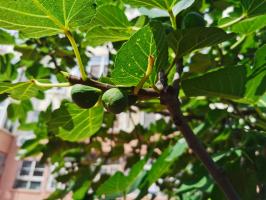Is Total Plant Water Potential Positive?
Plants require water to survive and thrive. Water is crucial for photosynthesis, nutrient uptake, and transport of water, nutrients, and minerals throughout the plant. The amount of water available to a plant is determined by its total plant water potential. The question is, is total plant water potential positive?
What is Total Plant Water Potential?
Total plant water potential is the sum of water potential components within a plant. These components include osmotic potential, pressure potential, and gravity potential. Osmotic potential is the pressure required to prevent the flow of water across a semipermeable membrane, while pressure potential is the measure of the push or pull of water in a plant cell. Gravity potential is the measure of the pull of gravity on water in a plant. When all these components are summed up, we get the total plant water potential.
What Does Positive Total Plant Water Potential Mean?
A positive total plant water potential means that water is available to the plant. The water flows from an area of high water potential to an area of low water potential. Therefore, if the total plant water potential is positive, water will flow from the soil to the root system, then to the leaves and the rest of the plant. The water potential difference between the soil and the plant helps drive the water uptake process.
What Happens When Total Plant Water Potential is Negative?
When the total plant water potential is negative, it means that there is not enough water available to the plant. As a result, water uptake slows down, and there is insufficient water for the demand of the plant. A negative total plant water potential is also an indication of insufficient water in the soil. This can lead to water stress, which affects plant growth and development. If the water stress continues for an extended period, it can lead to plant death.
Factors That Affect Total Plant Water Potential
Several factors can affect total plant water potential. One of the critical factors is the soil water potential. If the soil's water potential is low or negative, there will be less water for the plant to take up, leading to water stress. Another factor is transpiration, the loss of water from the leaves. If the rate of transpiration is high, it can lead to water stress as the plant is losing more water than it is taking up. Air temperature and humidity can also affect the rate of transpiration and, therefore, the plant's water potential. Wind speeds can also affect the rate of transpiration by increasing the amount of air movement around the plant.
Conclusion
Total plant water potential is a measure of the amount of water available to a plant. A positive total plant water potential means that there is enough water available for the plant to take up. A negative total plant water potential means that there is insufficient water for the plant's demand, leading to water stress. Several factors can affect total plant water potential, including soil water potential, transpiration rate, air temperature, and humidity. Understanding these factors can help us manage water availability for plants and ensure their healthy growth and development.

 how many times do yo...
how many times do yo... how many planted tre...
how many planted tre... how many pine trees ...
how many pine trees ... how many pecan trees...
how many pecan trees... how many plants comp...
how many plants comp... how many plants can ...
how many plants can ... how many plants and ...
how many plants and ... how many pepper plan...
how many pepper plan...
































